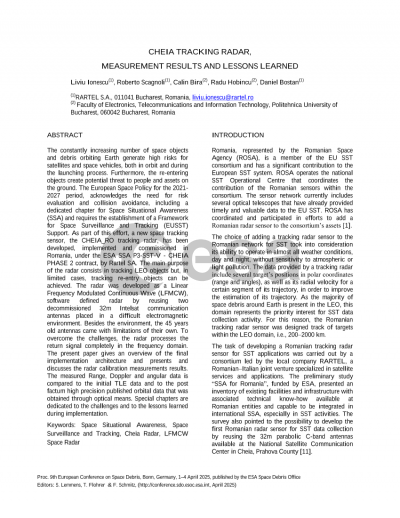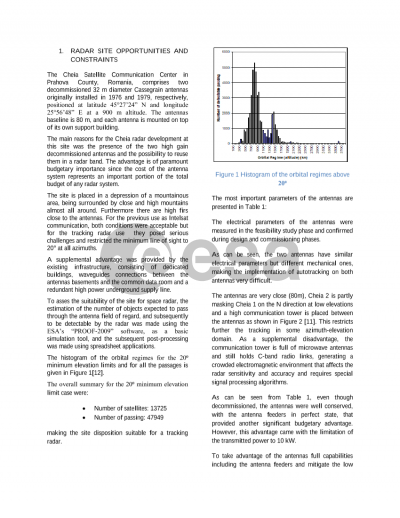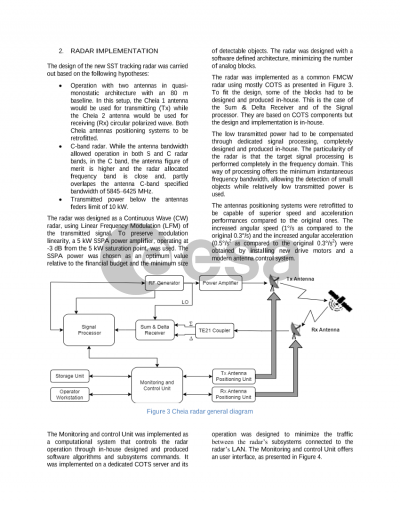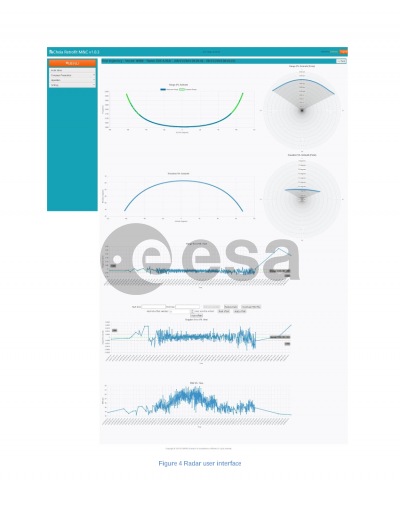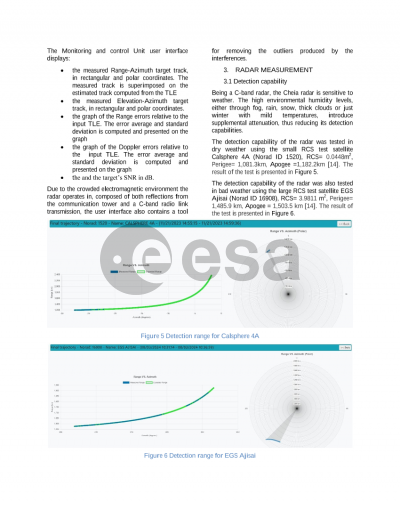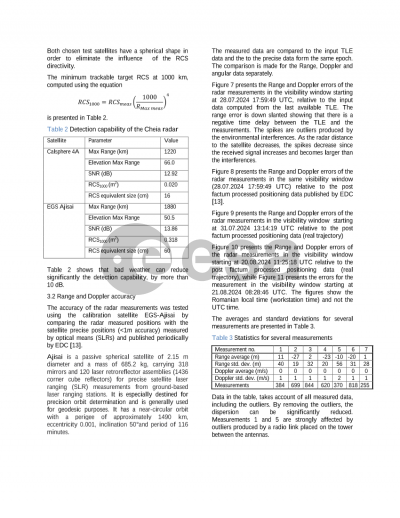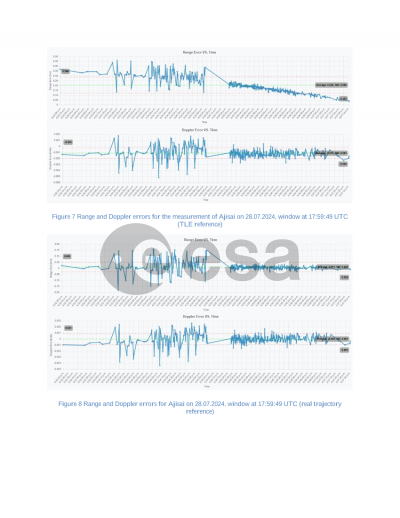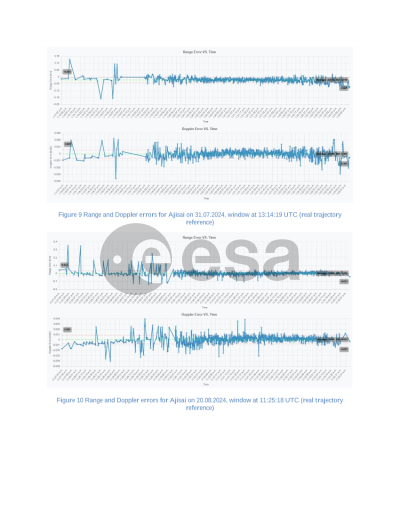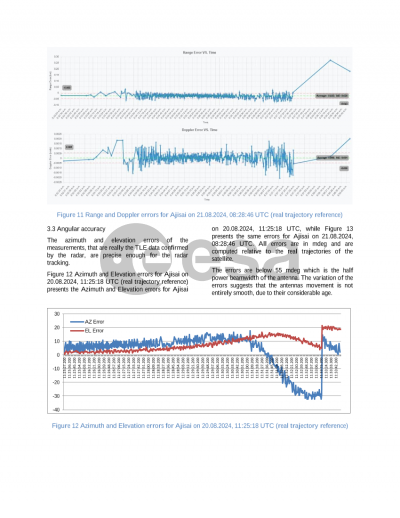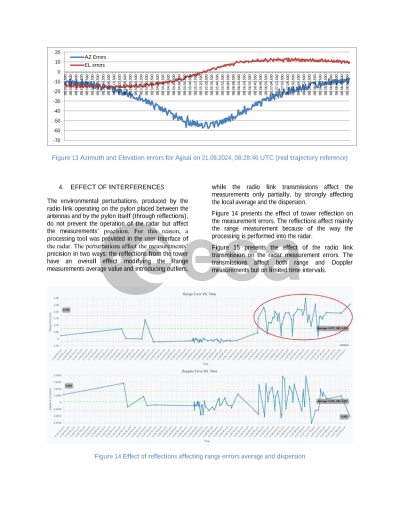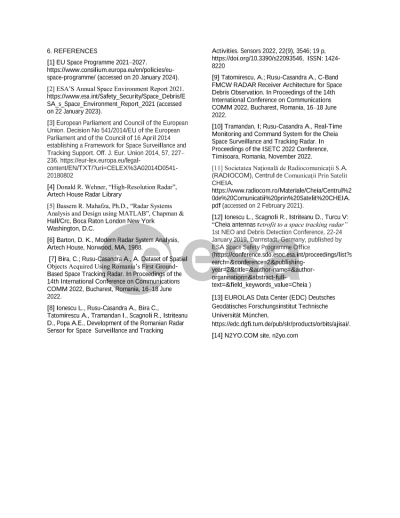Document details
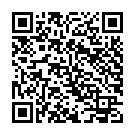
Abstract
The constantly increasing number of space objects and debris orbiting Earth generate high risks for satellites and space vehicles, both in orbit and during the launching process. Furthermore, the re-entring objects create potential threat to people and assets on the ground. The European Space Policy for the 2021-2027 period, acknowledges the need for risk evaluation and collision avoidance, including a dedicated chapter for Space Situational Awareness (SSA) and requires the establishment of a Framework for Space Surveillance and Tracking (EUSST) Support. As part of this effort, a new space tracking sensor, the CHEIA_RO tracking radar, has been developed, implemented and commissioned in Romania, under the ESA SSA P3-SST-V - CHEIA PHASE 2 contract, by Rartel SA. The main purpose of the radar consists in tracking LEO objects but, in limited cases, tracking re-entry objects can be acheived. The radar was developed as a Linear Frequency Modulated Continuous Wave (LFMCW), software defined radar by reusing two decommisioned 32m Intelsat communication antennas placed in a difficult electromagnetic environment. Besides the environment, the 45 years old antennas came with limitations of their own. To overcome the challenges, the radar processes the return signal completely in the frequency domain. The present paper gives an overview of the final implementation architecture and presents and discusses the radar calibration measurements results. The measured Range, Doppler and angular data is compared to the initial TLE data and to the post factum high precision published orbital data that was obtained through optical means. Special chapters are dedicated to the challenges and to the lessons learned during implementation.
Preview
